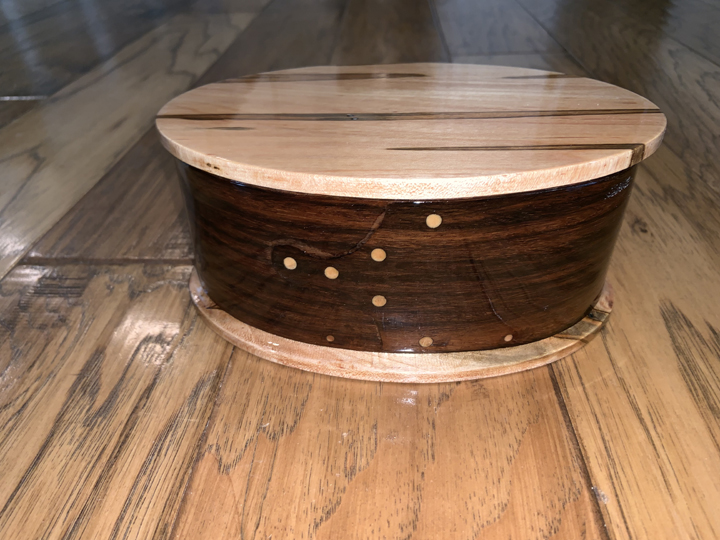
Ambrosia Maple and Walnut Shaker Box - 178

Measures 8" long by 5" wide by 3.25" high. $40
Ambrosia Maple - There are approximately 128 species , most of which are native to Asia, with a number also appearing in Europe, northern Africa, and North America. The ambrosia character in the maple wood is caused by a beetle which bores through the living wood, carrying a fungus on its legs/carapace that is deposited on the wood fibers. As the sap continues to flow through the tree, it causes the fungus to spread out through the wood from the small holes carved by the beetle. This ambrosia fungus, which gives the wood its name, causes discoloration in the maple lumber ranging through various shades of brown, but sometimes including orange, pink, green, and light purple. When boards are flat-sawn from these logs, the ambrosia signature is accentuated and the wood achieves a highly unique appearance with a distinctly rustic nature. Although created by this combination of beetle and fungus activity, ambrosia maple is sometimes referred to as "wormy" maple.
Curley Walnut - Curly Black Walnut is a rare find, indeed. It's the stuff of heirloom instruments and furniture, thus it is more expensive than plain Black Walnut. Curly Black Walnut is called curly because of the wavy figured pattern that appears perpendicular to the growth rings. Except in stump wood, the curly figure seems to be completely random. Like plain Black Walnut, it is a heavy and dense wood with silica in it that can make it difficult to saw and plane. But its texture is even and it can be polished to a high or lustrous sheen.